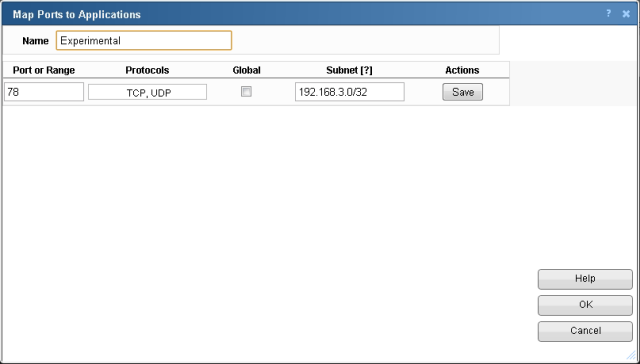Mapping ports to applications
Use the Map Ports to Application dialog to define applications using port mapping. You can name the application, assign ports and protocols, and define the scope of the application definition within the network. You can map a port or port range to a network, subnet, or individual host. This allows you to configure a port for an application globally (port 80 for http) and on a single host (port 80 for http on 192.168.3.33).

- Name. Enter the name of the application. This name can also be used to define an instance of the application that is applied to a specific subnet which is defined in the subnet box.
- Port. Enter a port number, or range of port numbers to be mapped to the application. For each port, you can select the protocol and the network scope to be applied.
- Protocols. Select the transport protocols used to provide services to the application.
- Global. Select this option if port to application mapping is to be applied to the entire network. When this option is selected, the Subnet box is not active. When this option is not selected, the Subnet box is active and a subnet can be defined.
- Subnet. When the Global option is not selected this option is available. Use this box to define the subnet to which the application definition is to be applied. The format for defining the subnetwork is the standard Classless Inter-Domain Routing (CIDR) format (10.0.0.0/8). You can map the port(s) to a single host by using a /32 subnet mask.
- Actions. The icons displayed in this column provide you with controls to edit or delete a port entry in the application definition.